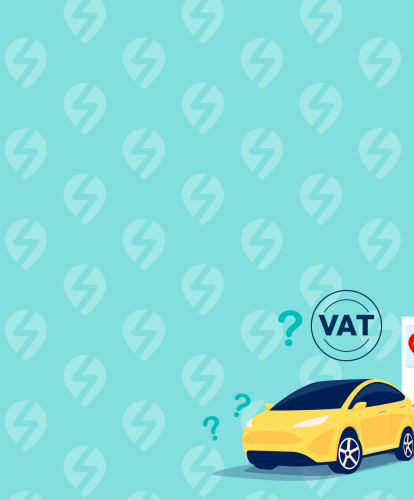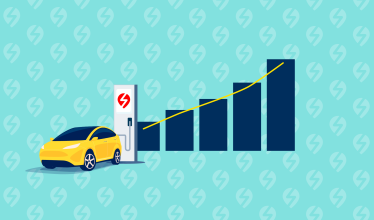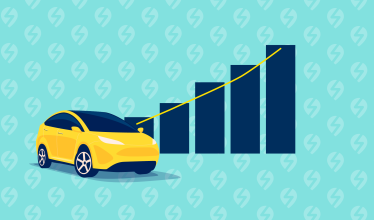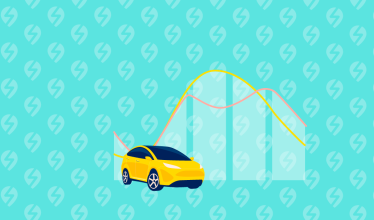What is the issue with VAT and EV charging?
The key issue is that VAT is charged at the lower 5% level for domestic energy whilst at a higher 20% rate for energy on public charging. This means that those EV drivers who are not able to charge at home are faced with a double penalty; not only to do they not have the convenience of home charging but also are faced with higher charging cost. The higher charging cost is due both to the higher cost of public charging and the higher rate of VAT on public charging. This has also been called a "Pavement Tax".
This is a known issue in the EV industry, and one of the key areas of focus for the FairCharge campaign, and addressing it would help with the fairness and accessibility of the EV rollout for all households (hhld) as highlighted in ChargeUK's Delivering Affordable Charging For All whitepaper.
The aim of this page is to quantify the impact of the differential VAT rates on EV drivers, which groups would benefit most from an equalisation in VAT and how much this would cost the government.
The analysis has been created using EV and charging forecasts, EV model efficiency combined with EV driver and charging patterns with data from end of 2024. The forecast focuses purely on BEVs. The analysis will be updated when any material changes in assumptions become available.
How much VAT do EV drivers pay?
All EV drivers pay VAT on charging, with charging at home subject to 5% VAT and charging on the public network subject to 20%. In 2025, a BEV driver with a home charger, based on average mileage and BEV efficiency, will pay £48 in VAT whilst a BEV driver with no home charger will pay £194 in VAT.
For the BEV driver with a home charger, charging will be split between at home and public charging whilst for a driver without a home charger charging will take place solely on the public network.
An estimated 80% of the 1.4m BEV drivers on UK roads at the end of 2024 have a charge point at home, and on average this accounts for 85% of their charging needs (Source: Zapmap EV Charging Survey 2024). For the estimated 20% of EV drivers who do not have a home charger, some have access to workplace charging or shared community charging, but the vast majority depend on the public charging network for all their needs.
How much would equalising VAT save EV drivers?
If VAT was equalised across domestic and public charging at 5%, a BEV driver with home charging would save an average of £29 per year, whilst an BEV driver who does not have a home charger would save an average of £145 per year.
How much would equalising VAT cost the treasury?
If the 5% VAT rate was applied to energy on public charging at the same rate as domestic energy, this would result in a reduction of tax from VAT across the BEV parc of an estimated £85m in 2025, rising to £143m in 2027 and £315m in 2030.
This is in comparison to the £2bn the government committed to a freeze on fuel duty for polluting petrol and diesel cars in the October 24 budget.
How much of the benefit of a reduction in VAT goes to non-home charger hhlds?
On aggregate, 56% of this total reduction in VAT would benefit BEV drivers with no home chargers, despite them being only 20-22% of the EV driver base. This is because they rely on the public charging network for their charging needs, in contrast to drivers with a home charger.
Under the assumption that an increasing number of drivers will not have access to a home charger (24% of new drivers by 2030), the proportion of the benefit of the reduction in VAT going to no home charger households (hhld) will also increase.
Key assumptions:
The Zapmap VAT analysis is based on a number of data sources including the Zapmap EV Charger Survey which provides data on EV charging patterns, Zapmap Price Index which tracks cost to charge on home and public network, SMMT which tracks the number of EVs registered, uses OBR forecast of BEV registrations and details on the ZEV mandate, EV Database which details EV vehicle efficiency and DfT data which tracks average mileage.
As with any forecast, a number of key assumptions drive the analysis. The key ones are hghlighted below.
Vehicles and mileage: The forecast focuses on BEVs only, and assumes BEV parc grows inline with the ZEV mandate less 10%. It does not include electric vans or PHEVs. Annual mileage is assumed to be 6600 miles as per DfT figures.
Pricing: All of the price reduction due to VAT is passed on to the driver by the CPOs, it has been assumed that the price elasticity is 1, and there are no major changes in the price per kWh over the period.
Home charging: Assumed that the proportion of New BEV drivers who do not have access to a home charger increases from 20% of BEV parc in 2025 to 24% by 2030.
As more solutions emerge for those drivers without a driveway such as shared solutions for flats, through-pavement solutions, shared community chargers or more comprehensive rollout of workplace charging, this figure may be lower.
Please note that third parties can use this data provided the source is clearly attributed to Zapmap, any graphs include the Zapmap logo, and a link is added back to https://www.zapmap.com in the body of the article. The data must be strictly copied and updated manually, no automated data collection can be applied in any form. The data can only published in its original state and without any modifications.



